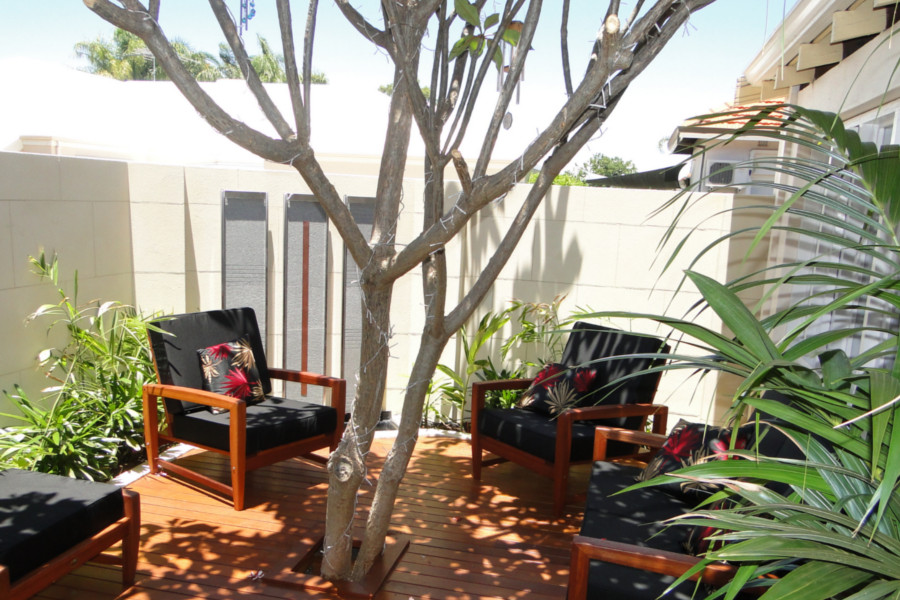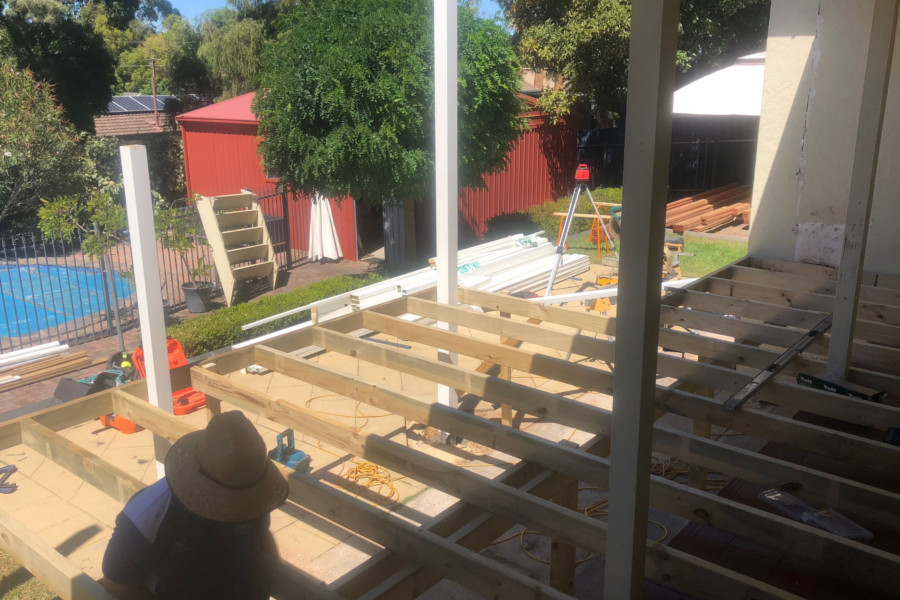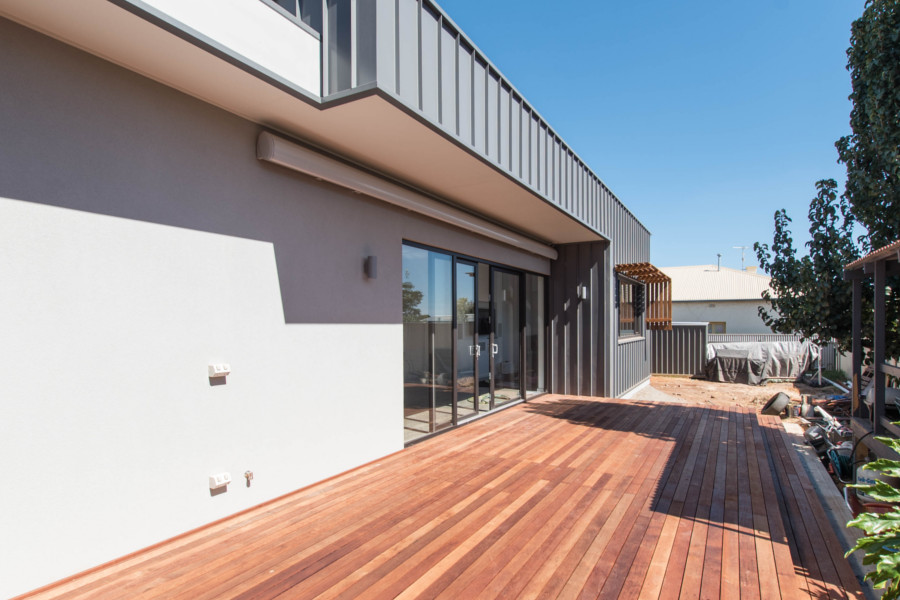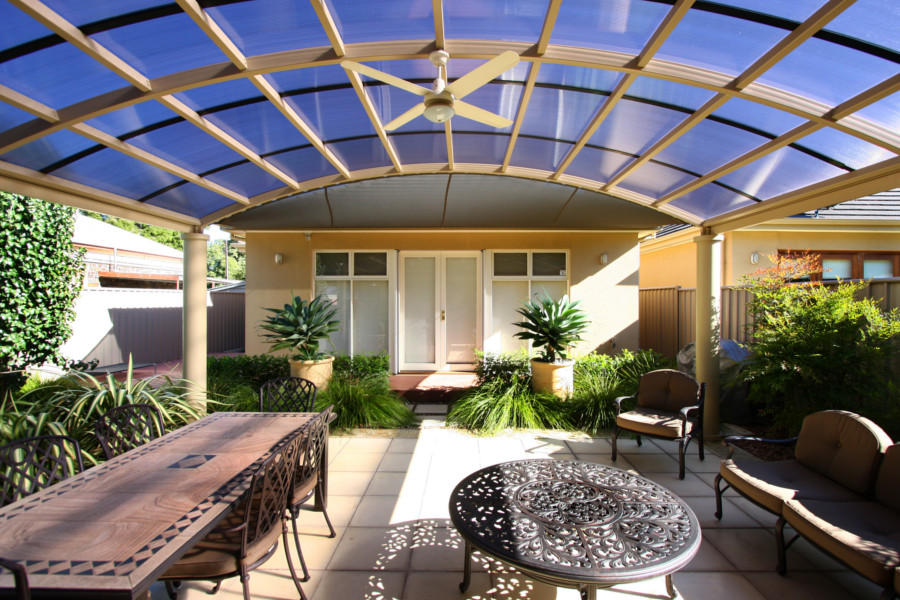
Your pergola designs may involve choosing between flat and gable roofing configurations. But here’s a third one to consider: curved polycarbonate roofing. And we’d like to show you the proper way to bend a polycarbonate roof.
Curved Roof Advantages
There are a number of advantages to curved roofing.
- It gives your pergola a unique design profile, quite different from the more conventional flat- and gable-roofed configurations. A curved roof appears more exciting than a flat roof, and less formal than a gable roof. It’s a configuration that adapts well to applications where you want a more energetic vibe.
- Curved roofs naturally give you more space than flat roofs as the arch extends above the dimension of the flat surface.
- The large surface area of flat roofs tends to soak in more heat from the sun. This makes them great when you want to retain heat in the pergola, but inefficient in terms of cooling requirements.
These benefits can be significant, making curved roofing a pergola design to consider.
The Math of Bending Polycarbonate Sheets
Because they are inherently pliable, polycarbonate roofing sheets are perfect for bending into curved roofs. But even so, there are limitations to what polycarbonate can do and there’s a mathematical equation that governs this pliability.
When bending polycarbonate roofing sheets to make curved pergola roofing, you need to consider two important things.
The first is the material’s Minimum Bending Radius. That is, the smallest radius around which the material can be cold-formed (bent without applying any heat) without compromising its long term integrity.
Here’s the Minimum Bending Radius table provided for Suntuf polycarbonate sheets.
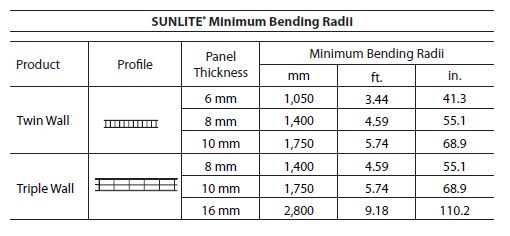
You can use this information alongside the following equation to figure out how to bend polycarbonate correctly.
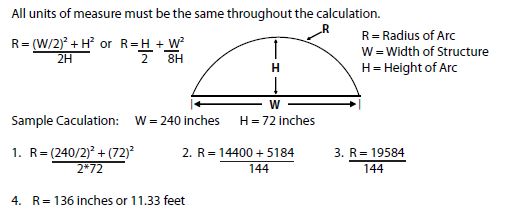
The other important factor to a curved roof pergola design is the orientation of the polycarbonate when being bent. The “flutes” or corrugations need to be parallel to the arch. These structures of the polycarbonate sheets increase their flexibility and rigidity but if they are oriented the wrong way dirt and moisture can build up and damage the material.

